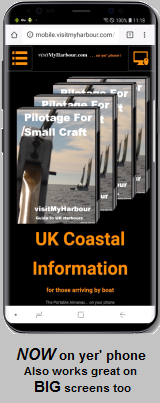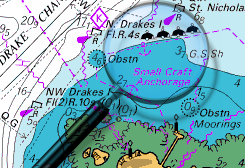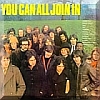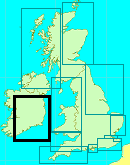You are viewing the expanded version of this Harbour,
for faster browsing
use the regular version here
Dublin
Courtesy Flag
Irish TricolourWaypoint
None given – depends on whether one is coming from North or SouthCharts
AC 1468 Arklow to the Skerries; AC1415 Dublin Bay; AC 1417 Port of Dublin; SC 5621 Dublin Bay; Imray C62 East Coast Ireland (No Dublin Harbour Plan); Imray C61 St Georges Channel (includes Dublin Plan)Rules & Regulations
Numerous. See "More Informarion" section for links and summaryHazards
Cluster of islands/rocks around Sorrento Point (Dalkey Island, the Muglins, Lamb island, Clair Rocks, Leac Buidhe and the Maiden Rock) Burford Bank in the middle of Dublin Bay between the two TSS. Rosebeg Bank south of the Ben of HowthTidal Data Times & Range
Dublin is a primary port; MHWS 4.1m MHWN 3.4m MLWN 1.5m MLWS 0.7m (links)This site is designed for slower, roaming broadband connections, like you would get at sea, so it needs JavaScript enabled to expand the text.
General Description
Contacts:
Dublin HM's Department tel no +353 (0)1 887 6000
Dublin VTS VHF #12 tel no +353 (0)1 887 6070
Poolbeg Marina VHF #37 tel no +353 (0)1 668 9983
Dublin City, much celebrated in verse, song and prose, sits astride the River Liffey at its entrance to Dublin Bay and has done since time began. Connoisseurs of Guinness may know the Liffey’s nectar well even if they’ve never been there, and who hasn’t heard of “Sweet Molly Malone”. Visit here and you’ll be reacquainted with these and much more beside; in the evening the pubs and streets resound with fiddles, flutes, bodhrans and the craic and the joy of it is that you can clew up close to the middle of the city at the Poolbeg Marina and weave your contented way back to your boat in the wee small hours of the morning with an uplifted heart and not a care about the morrow’s head!
It has to be said that the Dublin Port Authority has no interest in the leisure sailor other than that he stays out of the way and makes as few transmissions as possible on their VTS channel (mind you, woe betide you if you don't respond to one of their transmissions to you) There is a pontoon for visitors right in the heart of the city but, since the building of the Samuel Beckett bridge, this has been all but inaccessible to masted yachts and when you get there you will find that it has nothing but a cleat to tie up to and absolutely no security or facilities. Yes, the Samuel Beckett bridge is a swing bridge, but by the time (and that's days, not hours) you organise someone to swing it, it really isn't worth the effort. The Poolbeg Marina is, on the other hand, very welcoming and they should be the first port of call for any enquiries about stopping in Dublin - their website, below, is informative and pretty well up to date (2013). They will also be very helpful on "interpreting" the Port rules & regulations for entry! There is no helpful information for the leisure yachtsman on the DPA website apart from their Regulations for the Leisure sailor.
.
Approach
Tidal Streams:
The ebb and flow through St George’s Channel bends into and round Dublin bay with streams of between 1.5kts and 2.5 kts at Springs.
Along the South shore the stream runs North from Dublin HW +0315 and South from Dublin HW -0310. Along the North shore the stream runs NE for nine hours turning NE at 0315 after HW Dublin and SW 0015 before HW Dublin.
Around the Baily of Howth watch out for the overfalls caused when the outbound stream runs into the main St Georges stream.
In onshore winds there can be quite a chop at the entrance to the entrance channel when the tide is ebbing out past Poolbeg Light and meets the cross stream around the bay.
The first thing to note about the approaches to Dublin are the two TSS; one at the Northern end of the Burford Bank and one at the Southern end. If you include with this the Burford Bank itself then you can see that the direct approach from the East is a non starter as a passage plan.
The only departure point on the UK mainland which this affects is Holyhead and you should not plan to follow the rhumb line from Holyhead to Dublin but to veer off to the North or South to avoid the Burford Bank and the TSS. In all probability you’ll let the flood take you North of the direct line and then come back down on the ebb into Dublin Bay via the Baily of Howth and the problem becomes a not-a-problem as long as you don’t end up on the Bennet Bank.
From the North or South you just weather the headlands at the Baily of Howth (possible overfalls) or Dalkey Island. You can go through either Dalkey Sound or Muglins Sound in good visibility if you wish but coming up from somewhere like Arklow the course outside the Muglins is less than half a mile further than through Dalkey Sound.
Around about this stage you should establish comms on #12 with Dublin Port Radio and be listening carefully for any instructions they may have. They request that your R/T calls are kept to a minimum required for vessel safety.
Depending on the state of the tide you can make your way directly to the Poolbeg light or err on the side of caution and parallel the channel from the No 3 or No 4 buoy further out. If you are coming up from the South, theoretically (see below), you will have to cross the channel to the North side before you enter the main harbour; you need to pick your moment and do this at right angles. Remember that the big ships are on a schedule and will have at least 10kts overtaking speed on you so that if they are hull up they’ll be on you in no time at all (especially those high speed cats which run across from Holyhead).
Dublin VTS will expect you to remain just outside to the north of the buoyed channel all the way in (there’s plenty of water but pass close North of the N0 11 buoy and stay close South of the North Bank Tower at LWS) It is not permitted to enter the docks under sail; you should pass Poolbeg light under engine.
Once you have passed the North Bank Light you should be planning to cross to the South side of the channel to avoid the Ro-ro ferry terminals on the North bank. It’s then just a case of watching out for any movement at the Container terminal on the South Bank and making for the Poolbeg Marina which is the only viable option for visiting yachts.
Practical application of the Rules
Having said all that, you will note that they slip in a note in their regulations to say that, outwith the channel markers, Rule 9 does not apply. Take that back to the chart and you will see that there is plenty of water at the entrance for one to pass through the entrance without entering the channel - on either the North side or the South side. And that is what happens at a practical level; if you are coming from the South, remain outside the channel and transit close to the channel but outside it all the way as far as their No 14 buoy and then buoy hop to the marina. If coming from the North, come in along the North side of the channel and get clearance from the VTS to cross to the South side before Poolbeg Light. We are told that the peak times for large ships is between 0800 and 1000 in the morning and at about nineish in the evening.
Berthing, Mooring & Anchoring
It is not an option to anchor within Dublin Docks,
...... you will have to moor at Poolbeg Marina which still charges (2022) 3.0 Euros per metre and 10kw electric cards are 3.5 Euros . There is a promotional discount for boats from East Coast Clubs. If you stay for three nights the third night is free. I know their website download for prices says it's for 2019 but we've checked and they haven't increased their prices for 2022.
Poolbeg Marina http://www.poolbegmarina.ie/
If you really, really want to go up to the visitors pontoon in the City Centre bridge swinging/lifting times can be found in the Notices for Mariners 10 & 11 of 2022 at:
http://www.dublinport.ie/information-centre/notice-to-mariners/
To sumarise they say
Bridge will be opened for leisure traffic when required but subject to: a) Minimum of twenty four (24) hours notice. b) Opening Times 0400 to 0600 and 2000 to 2200
The actual operation of the Sam Beckett Bridge takes 4 minutes to open - which is after the traffic has been halted and button pressed. Given that you have then to pass through and the operation reversed to to reposition the bridge - it is a major operation holding up traffic for the best part of at least fifteen minutes and they need at least two hours notice for your requested passage That has to be co-ordinated with the opening of the East Link bridge. You are talking major delays to Dublins traffic for, perhaps, just your boat.
Basically it means that you can pass both bridges before six in the morning or after eight at night.
Facilities
At the Poolbeg Marina you have all the facilities you would associate with a well run marina apart from petrol (as usual). They have toilets and showers (coin op) in the clubhouse as well as Wifi and a lounge bar. During the summer months there is an arrangement with a local laundrette for the collection and return of laundry.
There is a Tescos Express across the road and through the park in Irishtown - but you need to brave the main road and jump a wall to get across!
There are road and Air transport connections via the ferries and the Airport and it should be mentioned that there is a very good (and cheap) overnight coach connection from London to Dublin which does not have the baggage restrictions/added cost associated with the cheaper air carriers!
More Info
REGULATIONS:
The full version of these can be seen on the port website and a summary is given below. Note that they have recently renumbered the buoys and the No14 buoy in the rules is now the No 16 buoy.
http://www.dublinport.ie/information-centre/leisure-craft-guidelines/leisure-craft-guidelines/
1. Navigate clear of the TSS. Ignore the Inshore Traffic Zones; they do not apply to sailing vessels Rule 10(d)(i) applies.
2. Between the Dublin Bay Buoy (confluence of the two TSS) and Poolbeg Lighthouse navigate outside the buoyed channel.
3. Between the Poolbeg Light and the No16 Buoy off the Power Station keep to the North side of the channel
4. Upstream of the No 16 buoy switch to the South side of the channel and remain well clear of the Ro-ro ferry terminals along the north side. (And for goodness sake look over your left shoulder before you do that in case you are being overtaken by an inbound ferry!!!!)
5. If you have to cross from one side of the channel to the other do so at right angles.
6. Proceed under power only.
7. Call Dublin Port Radio on VHF #12 before entering the channel and listen out at all times when moving.
Eating, Drinking & Entertainment
There is not enough room to itemise all that is available but you will be sad to leave.
Links
|
Your Ratings & Comments









